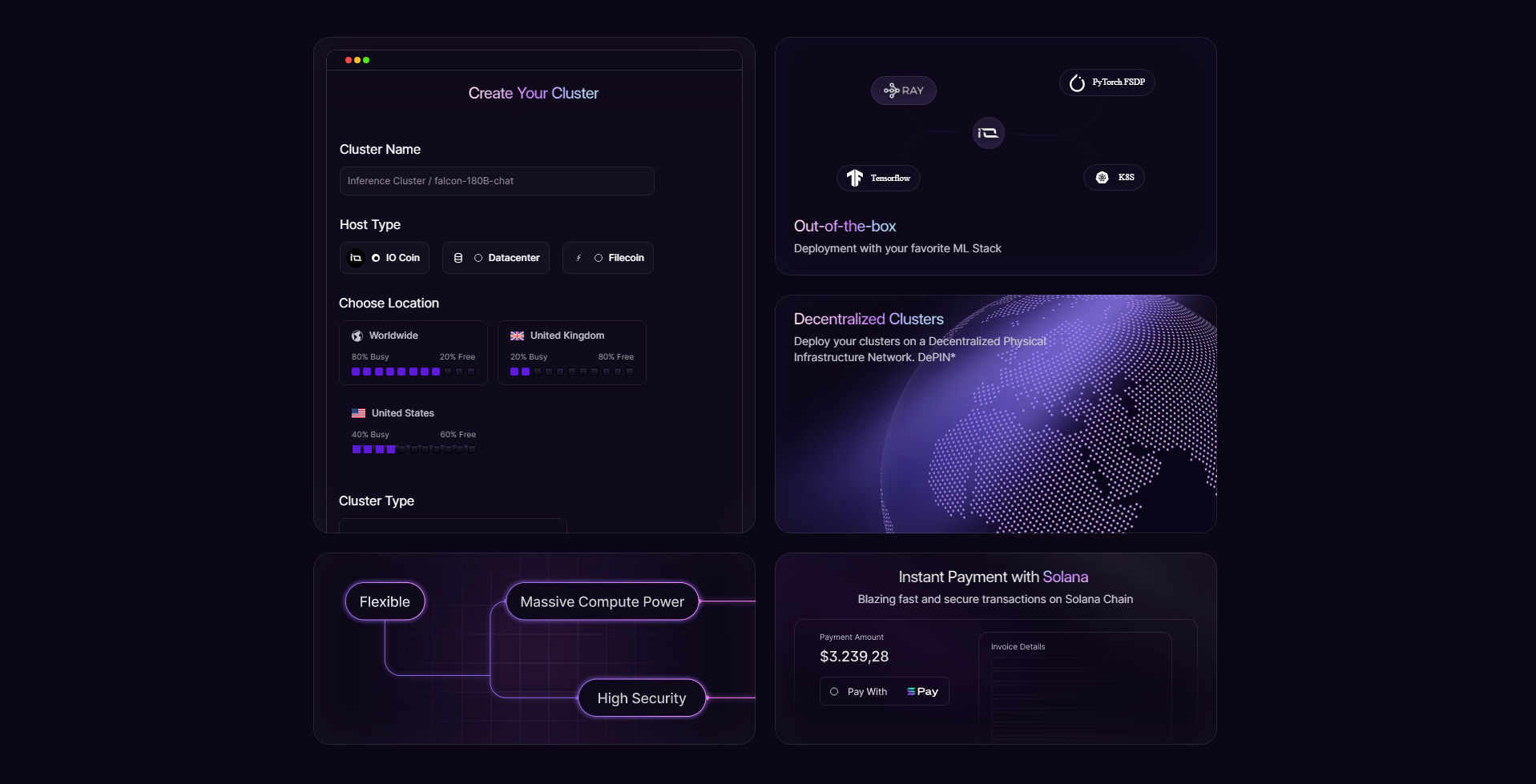
A project that began as an institutional-grade quantitative trading system for cryptocurrencies and equities has evolved into a decentralized network that sources GPU computing power to meet the rising demand for artificial intelligence and machine learning services.
Io.net has created a test network that draws GPU computing capacity from several data centers, cryptocurrency miners, and decentralized storage providers.
It is believed that aggregating GPU computational capacity will drastically reduce the cost of renting these sources, which are becoming more expensive as AI and machine learning technologies advance.
In an interview, CEO and co-founder Ahmad Shadid shares details of the network plans to provide a decentralized platform for renting computing power at a fraction of the cost of existing centralized alternatives.
Shadid describes how the initiative was conceived during a Solana hackathon in late 2022.
Io.net was developing a quantitative trading platform that relied on GPU computing power for its high-frequency operations but was hampered by the prohibitive cost of licensing GPU computing power.

In its primary documentation, the team describes the difficulty of renting high-performance GPU hardware, with the cost of renting a single NVIDIA A100 card averaging around $80 per day.
More than $100,000 would be required to operate for 25 days per month with more than 50 of these cards.
Ray.io, an open-source library that OpenAI used to disseminate ChatGPT training across over 300,000 CPUs and GPUs, provided a solution.
The library streamlined the project’s infrastructure, and its backend was developed in just two months.
At the AI-focused Ray Summit in September 2023, Shadid demonstrated io.net’s working testnet, highlighting how the project aggregates computing capacity served to GPU consumers in clusters to meet specific AI or machine learning use cases.
“Not only does this model allow io.net to provision GPU compute up to 90% cheaper than incumbent suppliers, but it allows for virtually unlimited computing power.”
The decentralized network is set to leverage Solana’s blockchain to deliver SOL and USD Coin (USDC) payments to machine learning engineers and miners that are renting or providing computing power.
“When ML engineers pay for their clusters, these funds are directed straight to the miners that served in the cluster with their GPUs, with a small network fee being allocated to the io.net protocol.”
On the project’s roadmap is the unveiling of a dual native token system comprised of $IO and $IOSD.
The token model will compensate miners for executing machine learning duties and maintaining network uptime, considering the dollar cost of electricity consumption.
“The IO coin will be freely traded in the crypto market and is the gate to access the compute power, while the IOSD token will serve as a stable credit token algorithmically pegged to 1 USD.”
According to Shadid, io.net is essentially distinct from centralized cloud services such as Amazon Web Services (AWS):
“To use an analogy, they’re United Airlines and we’re Kayak; they own planes whereas we help people book flights.”
The founder adds that businesses that require AI computation typically rely on third-party providers because they lack the GPUs necessary to manage everything internally.
According to Hadid, there is frequently insufficient capacity to satisfy the growing demand for GPUs, resulting in lengthy wait times and inflated prices.
As he describes, this is exacerbated by the inefficient utilization of data centers that are not optimized for the swiftly expanding AI and machine learning work.
“There are thousands of independent datacenters in the US alone, with an average utilization rate of 12 – 18%. As a result, bottlenecks are being created, which is having the knock-on effect of driving up prices for GPU compute.”
The advantage is that the average cryptocurrency miner will benefit from renting out their hardware in order to compete with AWS.
According to Hadid, the average miner utilizing a 40GB A100 earns $0.52 daily, whereas AWS sells the same card for AI computation for $59.78 daily.
“Part of the value proposition of io.net is first we allow participants to be exposed to the AI compute market and resell their GPUs and for the ML engineers we are significantly cheaper than AWS.
According to data shared with Cointelegraph, miners with GPU resources could earn 1500% more than they would by mining various cryptocurrencies.
